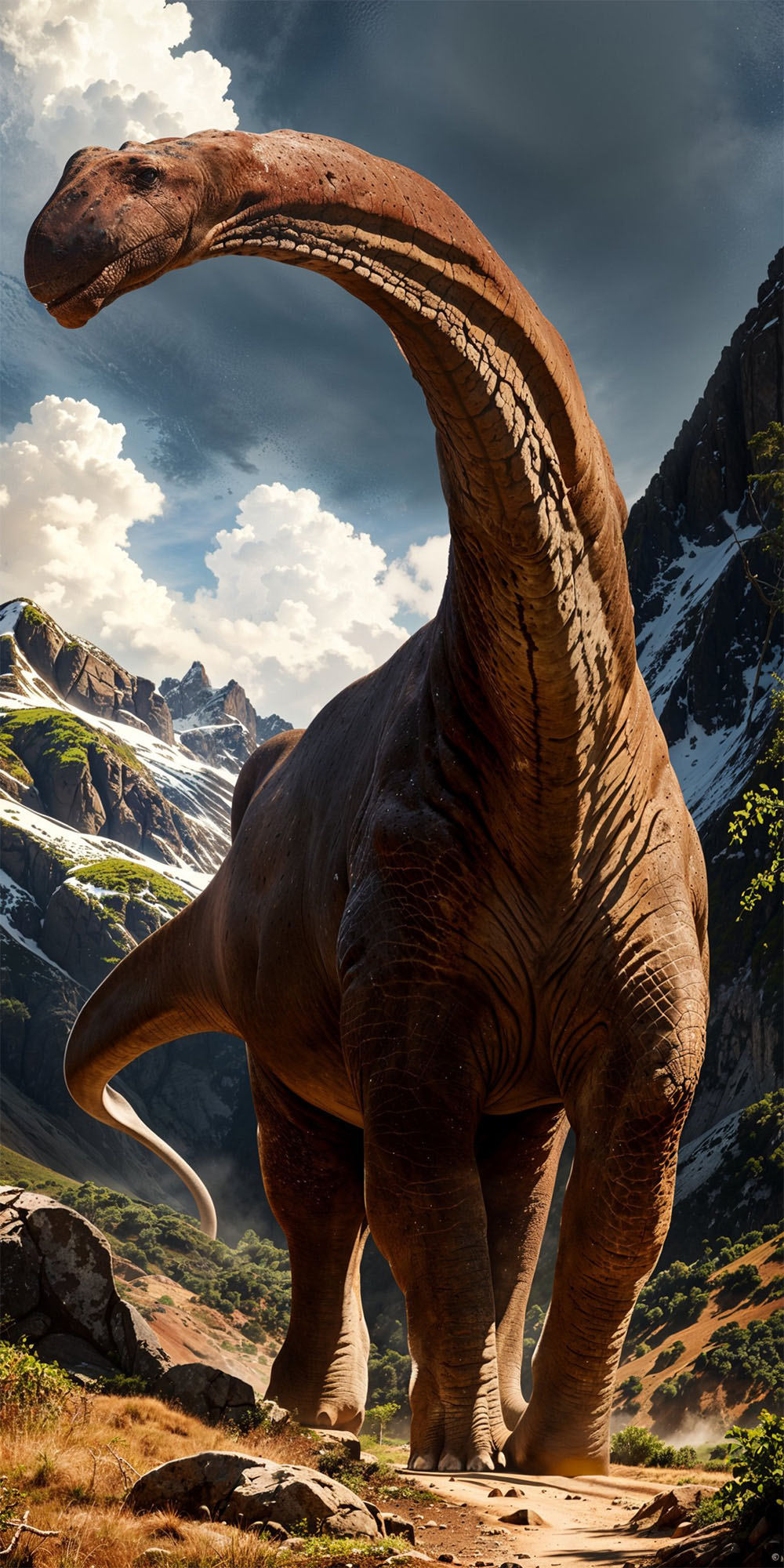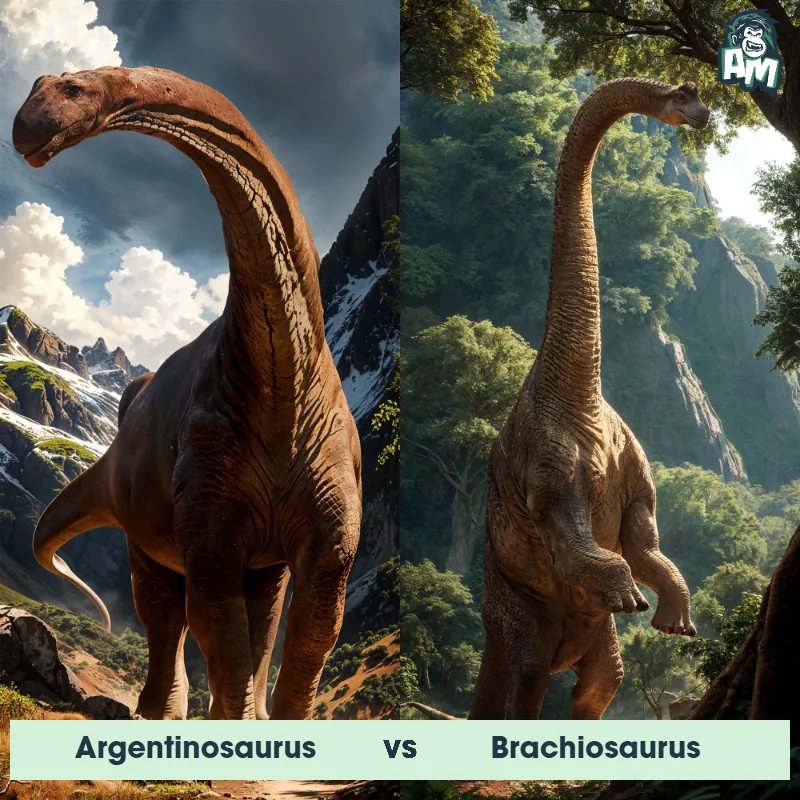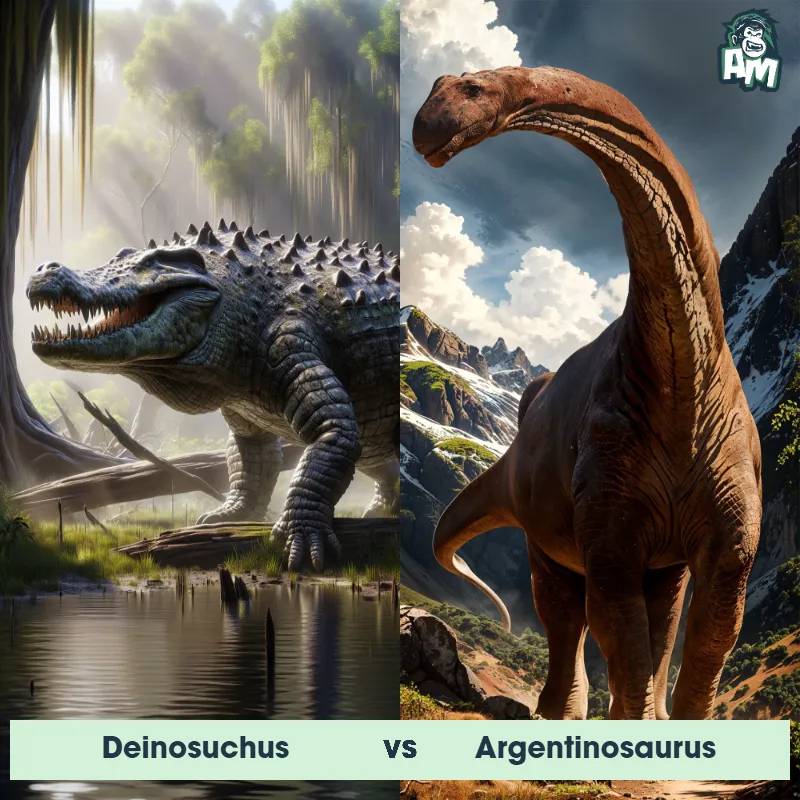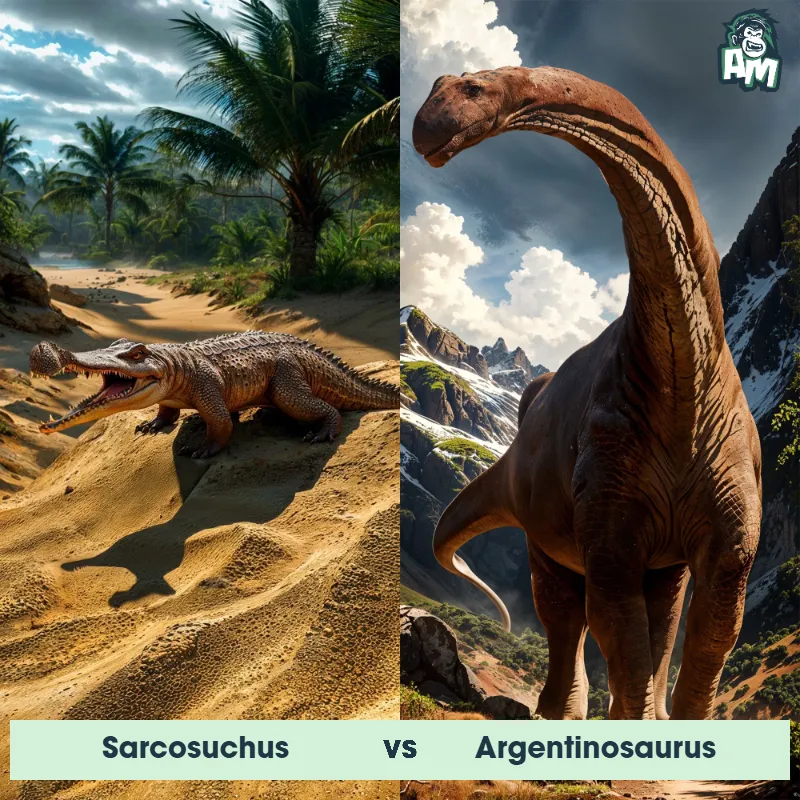The Argentinosaurus
Argentinosaurus, also known as the "Argentine lizard," was a massive, herbivorous dinosaur that lived during the Late Cretaceous period. It is estimated to have reached lengths of up to 100 feet and weighed around 100 tons, making it one of the largest land animals to ever exist. Its long neck and tail, paired with a bulky body, helped it graze on vegetation in its habitat.

| Argentinosaurus | |
|---|---|
| Size | Up to 100 feet (30.5 meters) |
| Weight | Around 100 tons (91 metric tons) |
| Speed | 15-20mph (24-32km/h) |
| Key Strength | Stomping power |
| Biggest Weakness | Maneuverability |
| Scientific Name | Argentinosaurus |
| Family | Titanosaur |
| Habitat | Land |
| Geography | South America |
| Diet | Herbivore |
| Lifespan | 60 years - 80 years |

The Argentinosaurus
Argentinosaurus, also known as the "Argentine lizard," was a massive, herbivorous dinosaur that lived during the Late Cretaceous period. It is estimated to have reached lengths of up to 100 feet and weighed around 100 tons, making it one of the largest land animals to ever exist. Its long neck and tail, paired with a bulky body, helped it graze on vegetation in its habitat.
Fun Fact: Argentinosaurus is believed to have had a heart the size of a small car to pump blood throughout its enormous body.
| Argentinosaurus | |
|---|---|
| Size | Up to 100 feet (30.5 meters) |
| Weight | Around 100 tons (91 metric tons) |
| Speed | 15-20mph (24-32km/h) |
| Key Strength | Stomping power |
| Biggest Weakness | Maneuverability |
| Scientific Name | Argentinosaurus |
| Family | Titanosaur |
| Habitat | Land |
| Geography | South America |
| Diet | Herbivore |
| Lifespan | 60 years - 80 years |
Argentinosaurus Matchups
We use AI to simulate matchups between the Argentinosaurus and other animals. Our simulation considers size, strength, and natural predatory behaviors to determine the most likely outcome.

Can't find the Matchup you want?
Create Your Own MatchupArgentinosaurus: Diet, Predators, Aggression, and Defensive Behaviors
What did Argentinosaurus eat?
Argentinosaurus were herbivores, meaning they primarily ate plants. Their diet likely consisted of ferns, cycads, and conifers. They had to consume vast amounts of vegetation to sustain their massive size.
Did Argentinosaurus have any predators?
As one of the largest dinosaurs to have ever existed, Argentinosaurus likely had few predators due to their size. However, they may have been vulnerable to large carnivorous dinosaurs like Giganotosaurus or Mapusaurus, which could have potentially targeted juvenile or injured individuals.
Were Argentinosaurus aggressive?
Argentinosaurus were herbivorous dinosaurs and are not believed to have been aggressive towards other creatures. Their large size and herding behavior may have served as a form of protection against potential threats.
Did Argentinosaurus fight?
Argentinosaurus were not known to be aggressive or engage in combat with other dinosaurs. Their massive size likely served as a deterrent to potential predators, making physical confrontations unnecessary.
How did Argentinosaurus defend themselves?
Argentinosaurus likely relied on their sheer size as a defense mechanism. Their massive bodies would have made them formidable opponents for most predators, and their herding behavior may have provided additional protection by strength in numbers.
What was Argentinosaurus's biggest weakness in a fight?
Despite their immense size and defensive capabilities, Argentinosaurus's biggest weakness in a fight would likely be their relatively slow speed and agility. Their sheer bulk could make them vulnerable to faster and more agile predators that could potentially outmaneuver them in a confrontation.
Fun Fact: Despite its massive size, Argentinosaurus likely had a relatively low metabolism and did not need to eat constantly due to its energy-efficient physiology.
Fun Fact: Fossilized remains of Argentinosaurus were discovered in Argentina in the 1990s, shedding light on this incredible dinosaur's existence and size.













